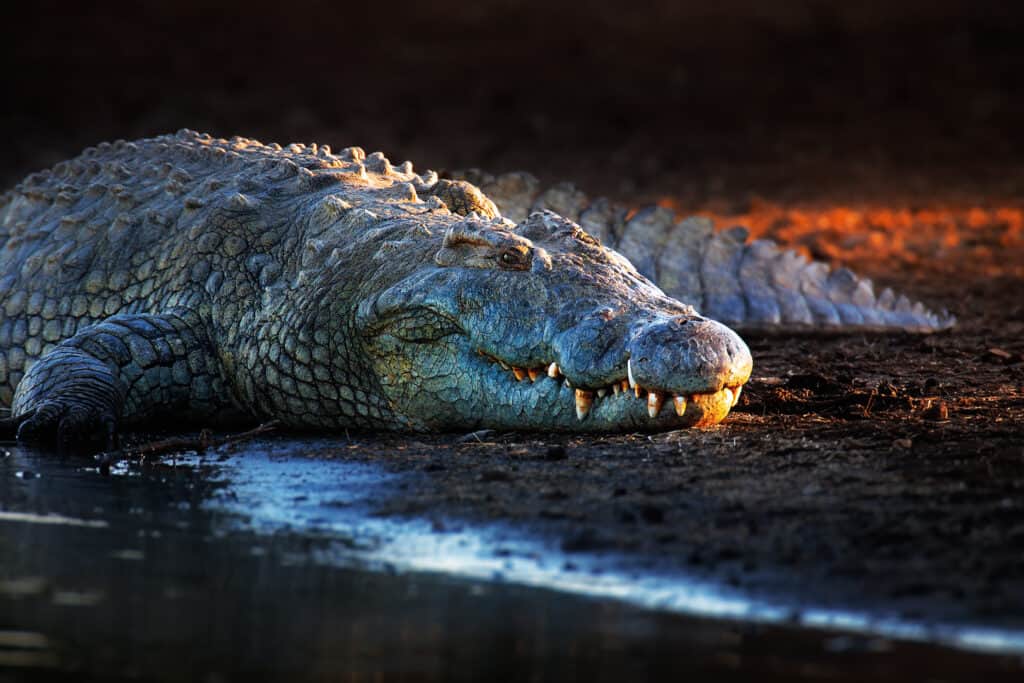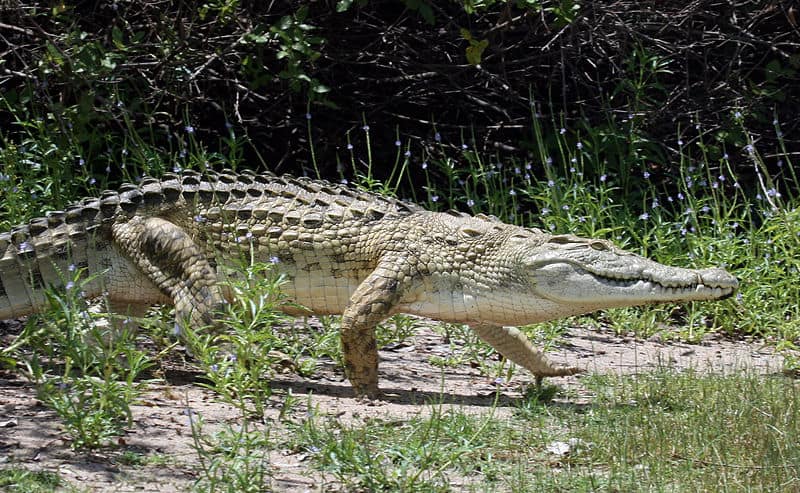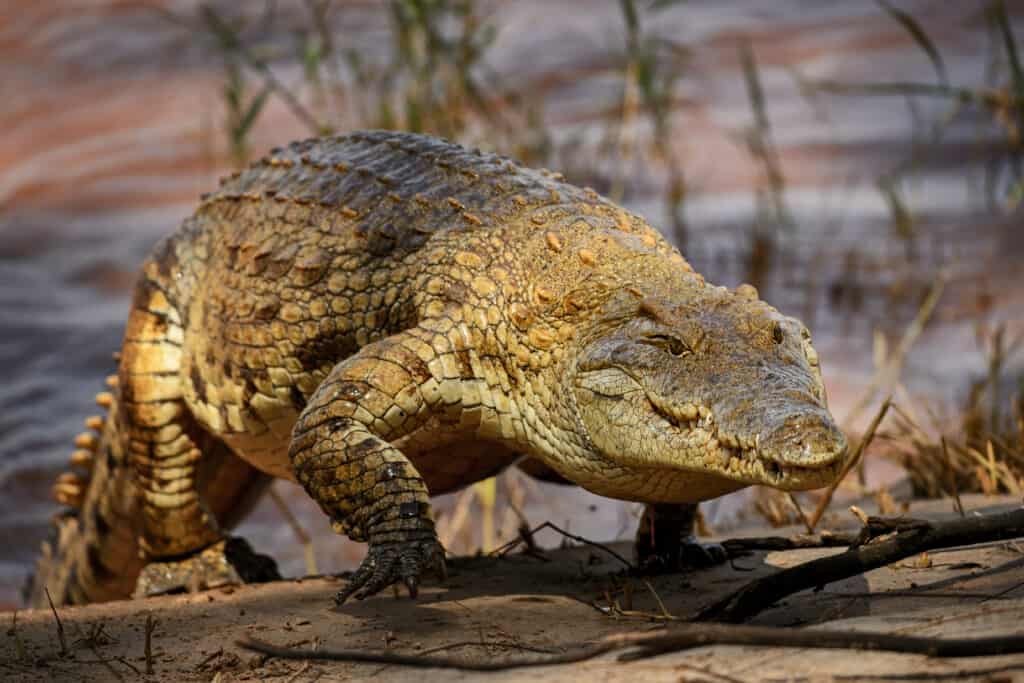Crocodiles are famously known to live in or around water for their entire lives. Without water, crocodiles are just big lizards! When we think of crocodiles, we usually think of large rivers, swamps, and coastlines (for saltwater crocs), but there are two species of crocodile that have made a home in one of the driest places on earth. Today, we are going to discover the incredible desert crocodiles that live in the Sahara Desert. Let’s get started!
Nile crocodiles: a desert-dwelling aquatic reptile

Johan Swanepoel/Shutterstock.com
The Nile crocodile is one of the two species of crocodile known to live across large portions of the Sahara Desert.
In the world of crocodiles, few are as famous as the Nile crocodile. These massive creatures are usually recognized as the second largest reptiles in the world, behind the saltwater crocodile, and are the largest freshwater predators in Africa. The Nile crocodile gets its name from its historical range that extended across much of Africa and up through the Nile almost to the coast. Aside from being large, they are also recognized as some of the most aggressive species of crocodiles in the world and will take almost anything they can bite.
This new study shows that Nile crocodiles are thriving in the Sahara Desert

Currently, the Nile crocodile has a range that includes most of sub-Saharan Africa, but a recent study shows that there are thriving populations of these crocs living in the harsh conditions within the Sahara. The study was primarily located in Mauritania, a desert country on the western coast of Africa, just north of Senegal and west of Mali. 90% of the country is within the Sahara Desert.
During the research, surveys detected the presence of Nile crocodiles in 78 localities across 10 different river basins. Almost all of the river basins were isolated, and most of the crocs surveyed lived in permanent gueltas and seasonal tâmoûrts. Using this data, it’s likely that there were 35% more crocodiles in the region than expected, a number that can potentially be expanded to represent other areas where Nile crocodiles live in the Sahara.
On average, there were 5 individuals per locality. In more densely populated regions, however, over 20 individuals were surveyed. During wet seasons and at night, even more crocodiles were observed leading to researchers suggesting the idea of regular dispersal from region to region.
How do Nile crocodiles live in such extreme conditions?

David Havel/Shutterstock.com
Since crocodiles need water to survive, it doesn’t make sense that they are able to survive in one of the driest places on earth. Still, as crazy as it sounds, these resilient creatures have found a way to survive.
The two primary places where the Nile crocs were found were in permanent gueltas and seasonal tâmoûrts. Gueltas are pockets of water that form in drainage canals or wadis (riverbeds) in the Sahara Desert. In many places, gueltas are viewed as a form of oasis. Many gueltas are permanent fixtures of the dry season, allowing crocodiles to live and feed when other creatures come to drink water.
Tâmoûrts are seasonal floodplains that only exist for portions of the year. During rainy seasons, these large marshy areas can appear, allowing transient individuals to travel across large areas of usually arid land in search of new watering holes and permanent habitats.
During the year, crocodiles will live in these small regions and feed. Since the Shahara is one of the driest places on earth, large animals from all over come to drink and congregate these watering holes and floodplains. For a predator like the Nile crocodile, watering holes with lots of large animals is prime real estate.
West African crocodiles: the cave-dwelling reptiles of the Sahara

Anton Ivanov/Shutterstock.com
Although Nile crocodiles are the most numerous crocodiles in the Sahara, there is another species of crocodile that is much rarer. The West African crocodile is a smaller, less aggressive relative of the Nile croc that is known for its desert-dwelling habits. In fact, it’s also referred to as the desert crocodile or the sacred crocodile.
Part of what makes the West African crocodile so unique is how it survives. Where the Nile crocodile searches out seasonal floodplains and pockets of water around river beds, the West African crocodile goes a bit deeper. In fact, the primary method it uses to survive the harsh desert involves spelunking! Whenever extended dry seasons occur, the West African croc will head into a nearby cave and enter a state of hibernation known as “aestivation”. When it rains, they all come out and gather together at gueltas.
Up Next
- The Next Invasive Threat to Florida Lakes: Nile Crocodiles!
- Discover The Largest Nile Crocodile Ever
- Discover the Massive Crocodiles that Live in Dens 40 Feet Below the Surface
The post Discover the Incredible Desert Crocodiles that Live in the Sahara appeared first on AZ Animals.
from Animal News, Facts, Rankings, and More! - AZ Animals https://ift.tt/MPfNpQe